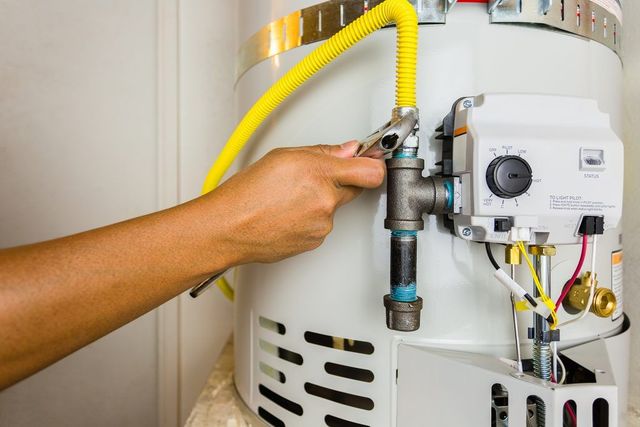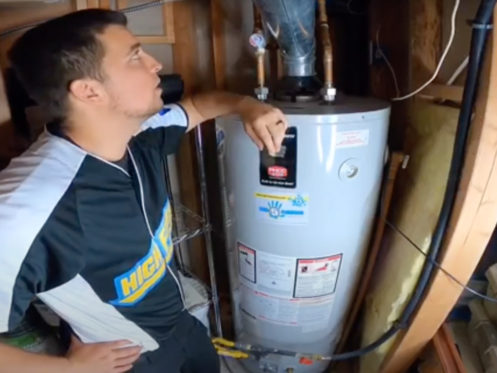On this page in the next paragraphs you might get more wonderful data about Tips For Maintaining Your Hot Water Heater.

Warm water is vital for day-to-day comfort, whether it's for a refreshing shower or washing recipes. To guarantee your hot water system runs successfully and lasts longer, routine upkeep is essential. This write-up offers practical ideas and understandings on exactly how to keep your home's hot water system to prevent disturbances and expensive repairs.
Intro
Maintaining your home's hot water system could seem complicated, but with a couple of simple steps, you can guarantee it runs smoothly for many years ahead. This guide covers whatever from recognizing your hot water system to DIY maintenance ideas and recognizing when to contact expert help.
Significance of Preserving Your Warm Water System
Normal maintenance not only extends the life expectancy of your warm water system but also ensures it operates effectively. Disregarding upkeep can lead to lowered performance, greater energy bills, and even early failure of the system.
Signs Your Hot Water System Demands Upkeep
Knowing when your hot water system requires focus can protect against significant issues. Look out for signs such as inconsistent water temperature, unusual noises from the heating system, or corroded water.
Purging the Hot Water Heater
Purging your water heater eliminates sediment buildup, boosting performance and lengthening its life.
Monitoring and Changing Anode Rods
Anode rods avoid corrosion inside the tank. Checking and changing them when broken is critical.
Facility Problems Needing Professional Help
Instances include major leakages, electric issues, or if your water heater is continually underperforming.
Regular Professional Upkeep Conveniences
Expert maintenance can consist of detailed examinations, tune-ups, and making sure conformity with safety and security requirements.
Examining and Adjusting Temperature Level Settings
Adjusting the temperature level settings makes certain ideal performance and safety and security.
DIY Tips for Upkeep
You can do several upkeep tasks on your own to keep your warm water system in top condition.
Looking for Leaks
Consistently examine pipelines and connections for leakages, as these can cause water damage and greater bills.
Comprehending Your Warm Water System
Before diving right into upkeep tasks, it's practical to understand the standard components of your hot water system. Typically, this consists of the water heater itself, pipes, anode poles, and temperature controls.
Month-to-month Maintenance Tasks
Normal monthly checks can aid catch small issues prior to they intensify.
Testing Pressure Relief Valves
Evaluating the stress safety valve ensures it works properly and prevents extreme stress accumulation.
Insulating Pipes
Insulating hot water pipelines lowers warm loss and can conserve energy.
When to Call a Specialist
While DIY maintenance is valuable, some problems call for specialist competence.
Conclusion
Routine upkeep of your home's hot water system is necessary for efficiency, durability, and cost financial savings. By complying with these tips and understanding when to look for expert aid, you can guarantee a reputable supply of warm water without unanticipated disruptions.
How to Maintain an Instant Hot Water Heater
Before tinkering with your hot water heater, make sure that it’s not powered on. You also have to turn off the main circuit breaker and shut off the main gas line to prevent accidents. Also turn off the water valves connected to your unit to prevent water from flowing into and out of the appliance. 2. When you’re done, you have to detach the purge valves’ caps. These look like the letter “T†and are situated on either side of the water valves. Doing so will release any pressure that has accumulated inside the valves while at the same time avoid hot water from shooting out and burning your skin. 3. When the purge valves’ caps are removed, you have to connect your hosing lines to the valves. Your unit should have come with three hoses but if it didn’t, you can purchase these things from any hardware or home repair shops. You can also get them from retail stores that sell water heating systems. Read the user’s manual and follow it to complete this task properly. When the hosing lines are connected, open the purge port’s valves. 4. You should never use harsh chemical cleaners or solutions when cleaning your unit. Make use of white vinegar instead. It should be undiluted and you’ll probably use about 2 gallons. 5. Now flush your water heater. This task should probably take about 40 minutes. We can’t give you specific directions for this because the procedure is carried out depending on the type, model and brand of your heater. With that being said, refer to the user’s manual. 6. When you’re done draining the unit, you have to turn off the purge port valves again. Remove the hosing lines that you earlier installed on each of the water valves. Put the valve caps (purge port) back in their respective places and be very careful so as not to damage the rubber discs that are found inside these caps. 7. Now that everything’s back in place, check your user’s manual again to find out how to reactivate your water heating system. 8. Once it is working, turn one of your hot water faucets on just to let air pass through the heater’s water supply pipes. Leave the tap on until water flows smoothly out of it. https://www.orrplumbing.com/blog/2014/september/how-to-maintain-an-instant-hot-water-heater/

Hopefully you liked our piece about Tips on Maintaining a Water Heater. Thank you so much for spending some time to browse our post. Enjoyed our entry? Please quickly share it. Help others discover it. We appreciate reading our article about Tips on Maintaining a Water Heater.
Free Estimate